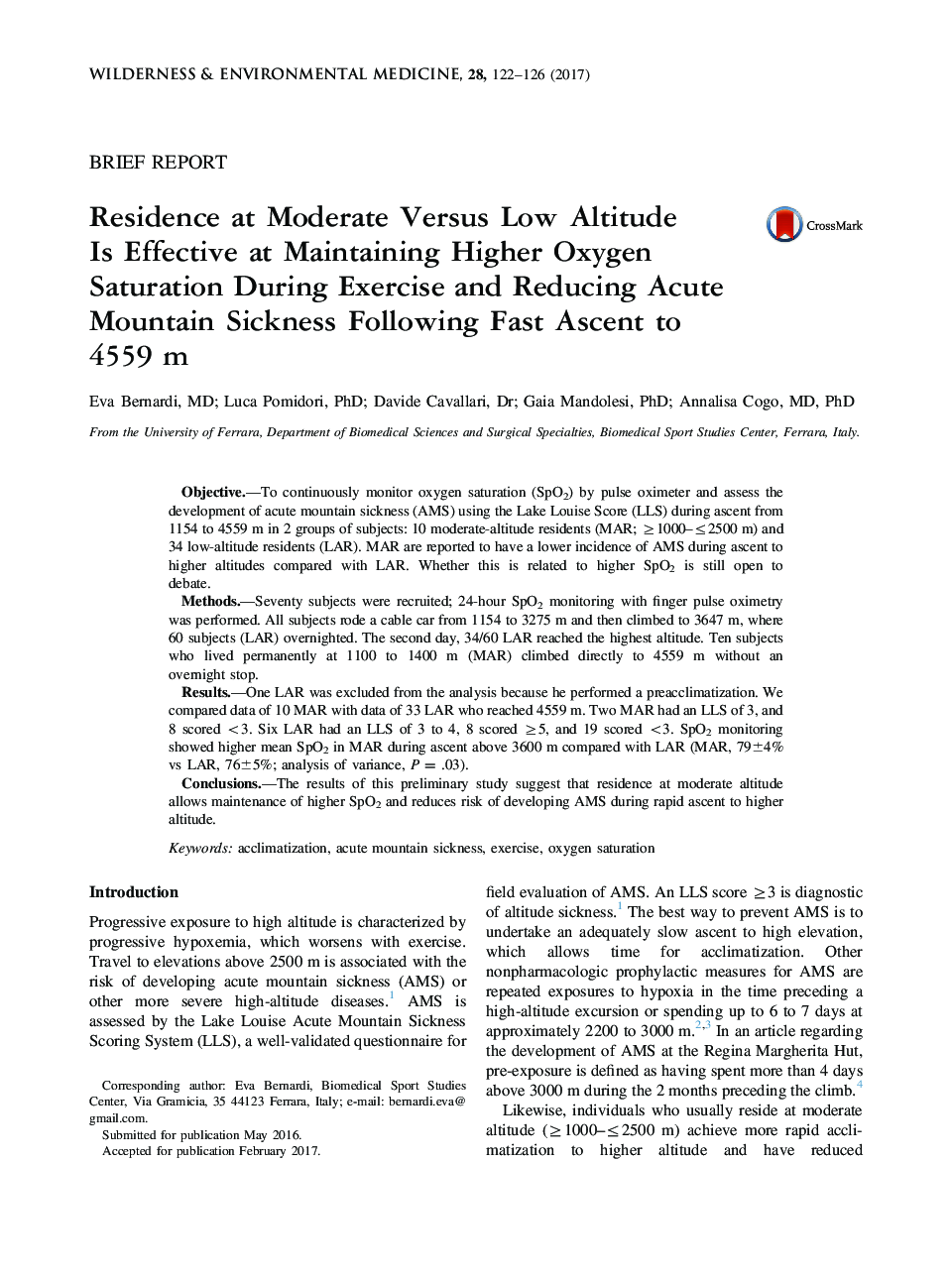| Article ID | Journal | Published Year | Pages | File Type |
|---|---|---|---|---|
| 5563644 | Wilderness & Environmental Medicine | 2017 | 5 Pages |
ObjectiveTo continuously monitor oxygen saturation (SpO2) by pulse oximeter and assess the development of acute mountain sickness (AMS) using the Lake Louise Score (LLS) during ascent from 1154 to 4559 m in 2 groups of subjects: 10 moderate-altitude residents (MAR; â¥1000-â¤2500 m) and 34 low-altitude residents (LAR). MAR are reported to have a lower incidence of AMS during ascent to higher altitudes compared with LAR. Whether this is related to higher SpO2 is still open to debate.MethodsSeventy subjects were recruited; 24-hour SpO2 monitoring with finger pulse oximetry was performed. All subjects rode a cable car from 1154 to 3275 m and then climbed to 3647 m, where 60 subjects (LAR) overnighted. The second day, 34/60 LAR reached the highest altitude. Ten subjects who lived permanently at 1100 to 1400 m (MAR) climbed directly to 4559 m without an overnight stop.ResultsOne LAR was excluded from the analysis because he performed a preacclimatization. We compared data of 10 MAR with data of 33 LAR who reached 4559 m. Two MAR had an LLS of 3, and 8 scored <3. Six LAR had an LLS of 3 to 4, 8 scored â¥5, and 19 scored <3. SpO2 monitoring showed higher mean SpO2 in MAR during ascent above 3600 m compared with LAR (MAR, 79±4% vs LAR, 76±5%; analysis of variance, P = .03).ConclusionsThe results of this preliminary study suggest that residence at moderate altitude allows maintenance of higher SpO2 and reduces risk of developing AMS during rapid ascent to higher altitude.
